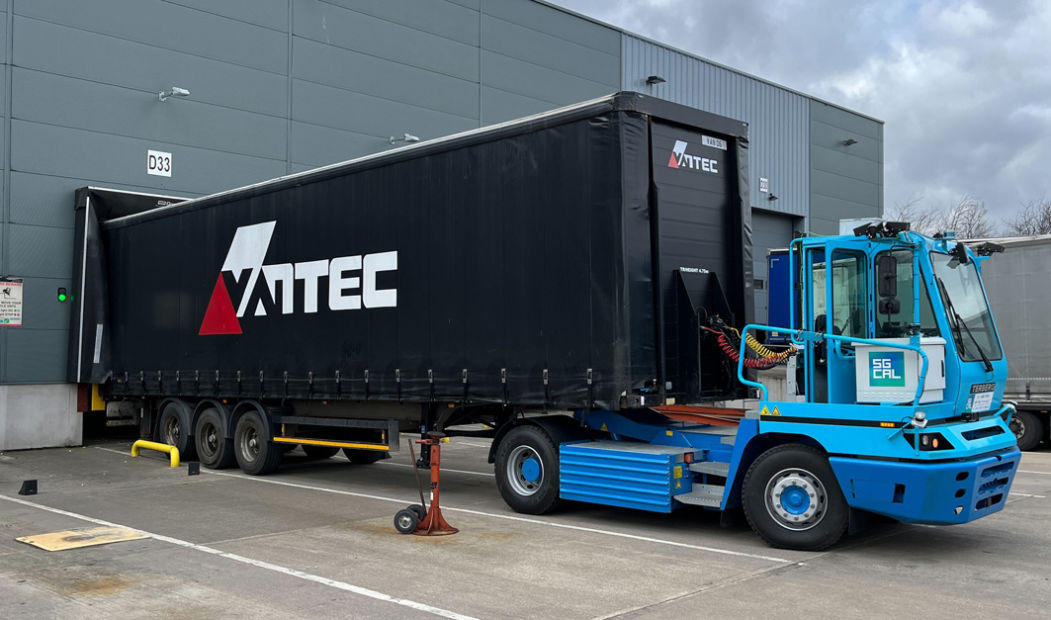UK starts trials of zero-emission automated logistics
- May 31, 2022
- Steve Rogerson

Trials of the UK’s first zero-emission automated logistics HGV is taking place in Sunderland.
The 5G Connected & Automated Logistics (CAL) project is carrying out autonomous driving testing of the UK’s first automated 40 tonne truck, powered by 5G, at Vantec in Sunderland.
The 5G CAL project was awarded a share of £30m through 5G Create, an open competition for 5G as part of the UK government’s Department for Digital, Culture, Media & Sport’s £200m 5G Testbeds & Trials (5GTT) programme.
The government is pushing ahead with its plans to unlock economic benefits and productivity boosts from 5G while commercial rollout continues at pace. It has now funded 24 5G testbeds across the UK, which have trialled almost 70 different 5G technologies, products and applications.
Following the announcement of the onboarding of Terberg as a partner earlier this year, and the arrival of the updated autonomous and electric tractor unit in the north-east in March, the 5G CAL proof of concept trial is now in sight as the project team continues on its mission to be the first in the UK to deliver zero emission automated logistics.
Terberg’s HGV is on-site at Vantec in Sunderland and has been equipped with autonomous and teleoperation technology, and the project team is geared up to deliver the UK first zero-emissions automated logistics test, which started on Nissan’s test track in mid-March.
The vehicle’s teleoperations system, installed in March, uses technology connected to a private 5G network. The system allows remote teleoperations to inform a team member (driver) to switch from autonomous operation to remote driver controls to overcome any unexpected conditions such as an obstacle or unexpected object on the road.
Safety is paramount and the team has embraced IoT opportunities with project partner StreetDrone, which has added a series of drive-by-wire components and live sensors as well as cameras (standard and lidar) on the vehicle’s roof. When combined with the additional lidars and cameras installed along the route it provides the truck with an extended field of view, augmenting its ability to react appropriately to changes in the external environment.
“This project provides an ideal testbed for the roll-out of a UK-developed autonomous product,” said Mike Potts, CEO of StreetDrone. “By driving more efficiency into industrial supply chain operations, we are supporting smarter processes and outcomes for businesses across the region and the wider UK. The technologies that we’ve already developed can be used in an industrial logistics setting and will quickly scale to many other similar contexts, where reducing cost and increasing safety are critical factors in profitable operations.”
Testing will continue for several weeks and will consist of self-driving testing on the test track at Nissan’s Sunderland plant, as well as testing of the teleoperations system, before progressing to live route testing. This phase is ultimately building up to proof-of-concept trials, which will also continue for a number of weeks.
The 5G CAL pilot is a proof of concept to prove that an autonomous truck can be automated to drive between Vantec and Nissan. This project is a natural evolution of the automated logistics journey that Nissan embarked upon 15 years ago to change the auto guided vehicles (AGVs) market. Driven by an ambition to automate deliveries between suppliers and facilities, this proof of concept encompasses all the essential elements to boost the connected autonomous mobility sector, in an inherently safe environment on the test track. This should give rise to the first commercial opportunities and a carefully managed rollout on to public roads.
“The 5G technology being trialled in Sunderland could be crucial to boosting the UK’s productivity and reducing emissions, so I’m thrilled the government has been instrumental in making this project a reality,” said Julia Lopez, the government’s digital infrastructure minister. “We’ve funded dozens of cutting-edge trials like this across the country to ensure we unleash the true potential of 5G to level up our economy and improve people’s lives.”
Paul Butler, CEO of the North East Automotive Alliance (NEAA), added: “The north-east automotive sector is a beacon of productivity. We continually strive for manufacturing excellence and this project is yet another example of how the north-east leads the way. Industrial digitalisation provides the next step change in manufacturing productivity. We must continue to embrace technology with forward thinking digital infrastructure planning from partners such as Sunderland City Council.”
As part of the five-year strategy, Butler said he wanted to attract more R&D and innovation-focused activities to strengthen the region to be an automotive powerhouse. This aligns to the North East Local Enterprise Partnership’s more and better jobs strategy to retain talent in the region and attract new talent.
“This 5GCAL project is the first of several phases required to operationalise this technology, however the scale of opportunity for this is huge and will no doubt deliver huge benefits to the north-east automotive sector and beyond,” said Butler.
Patrick Melia, chief executive at Sunderland City Council, said: “Equipping businesses across Sunderland with the next generation infrastructure that we are building in our smart city will allow us to continue breaking boundaries as we introduce new technology with an array of influential benefits for people and places. Shaping the future of connected automated logistics and urban mobility demonstrates our collective ambitions to lead more efficient, safer and environmentally friendly solutions to sustain our city, its prevalent industries and the planet alike.”
The £30m package consists of £16.4m from the government match-funded by organisations ranging from large tech and telecoms companies to SMEs and local authorities.




